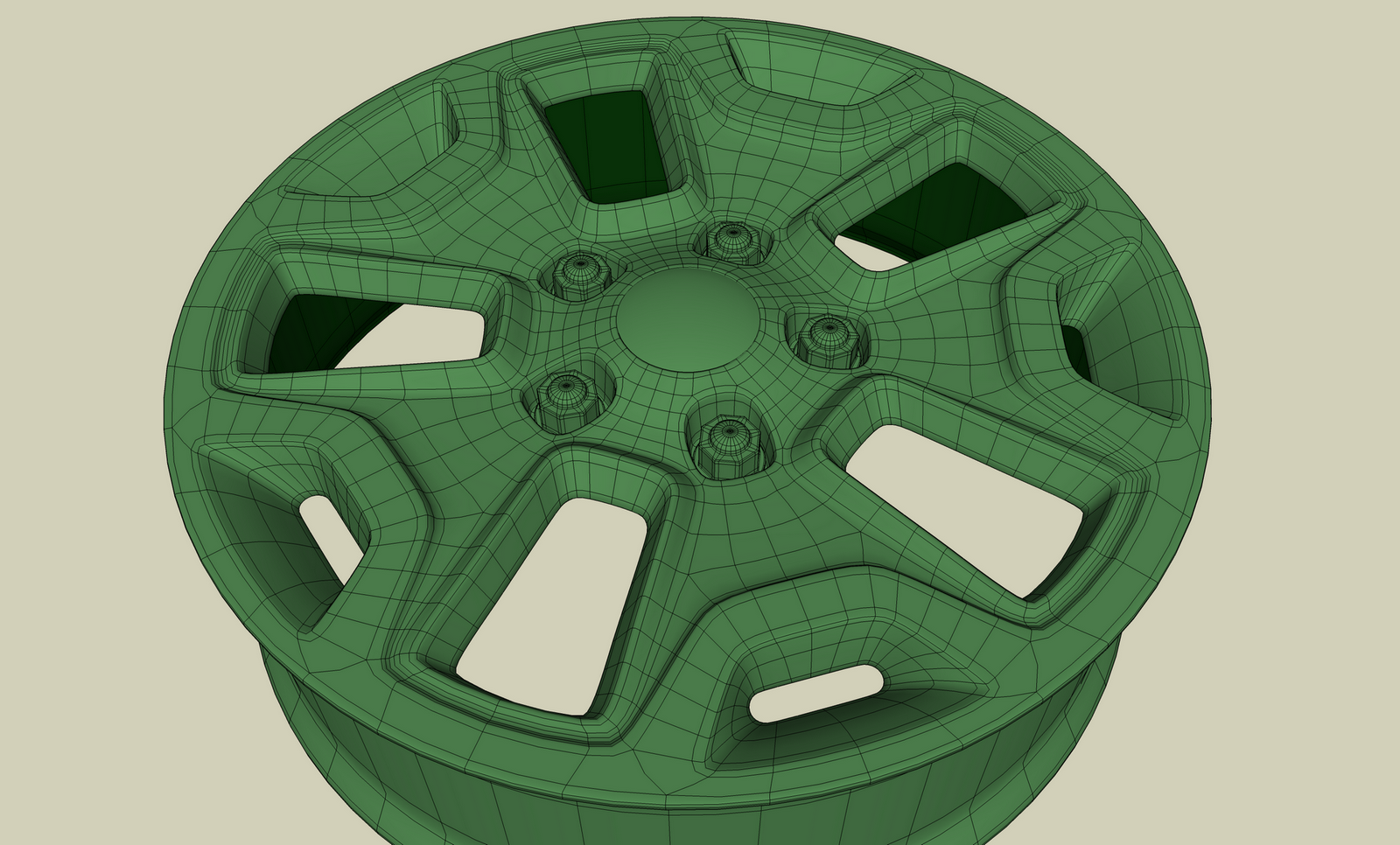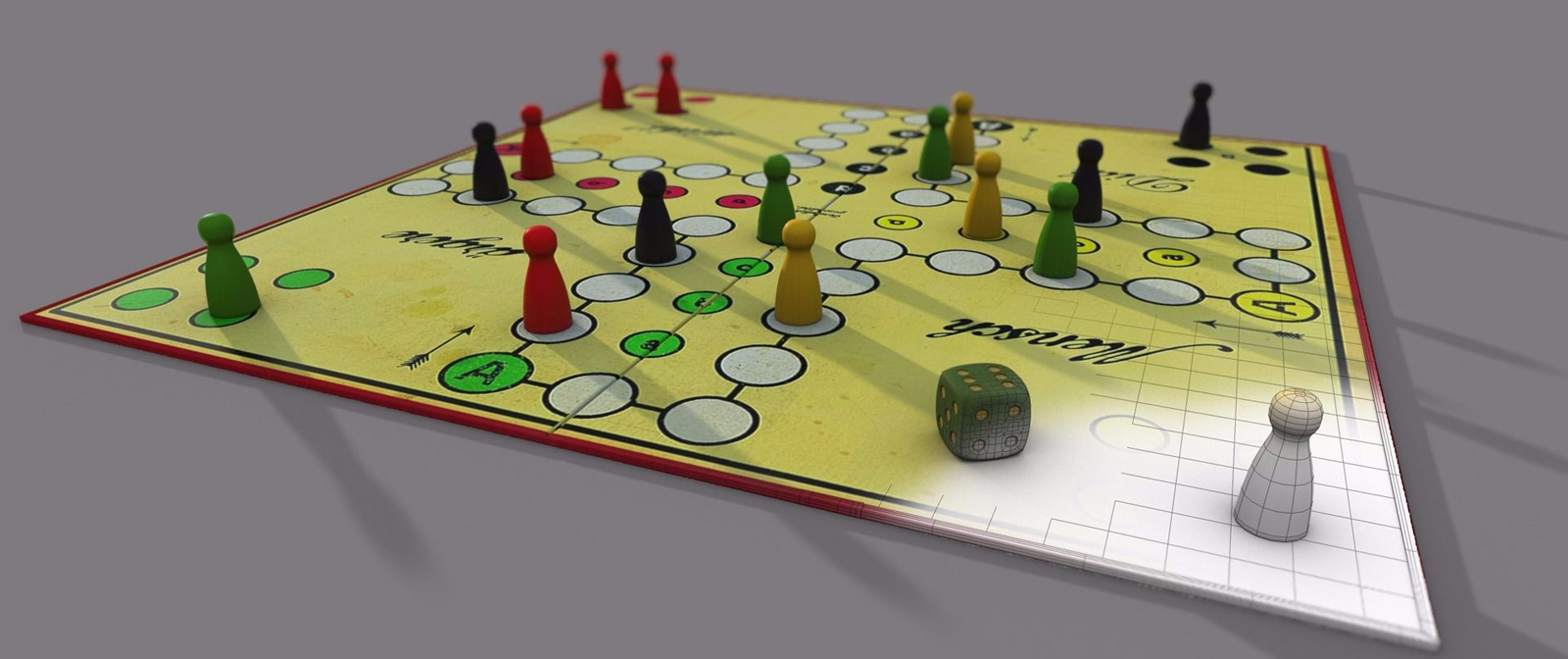SubD examples and models
-
Nice schemetic views indeed!
Thanks for sharing.
Just like substances, I tend to see quads in everything now. Just a mental exercise.Now, I wanted to ask, is it a recommended thing to regenerate quads on quads?
I mean, let's say I model a raw mesh in several clicks, then apply a subD on it, then explode it, then remove some redundant loops generated by subD, add some new vertices here and there, subD again, explode again, remove some redundant loops here and there, tweak some crease values, subD again, explode again, remove some loops, etc. etc.
The objective is to be able to get rid of some redundant loops that only add useless polys and keep adding details only where that matters.
I'm pretty conservative in my workflow so I don't know if this is a common method as nobody seems to talk about this? -
Hi & Thanks!
hmm - probably I do not understand (translate) correctly wouldn´t it be the SubD process itself, which makes out of a simple raw proxy geometry a new geometry with too much loops then? - you'd also need a good computer, to SubD this new very large proxy then again ...
wouldn´t it be the SubD process itself, which makes out of a simple raw proxy geometry a new geometry with too much loops then? - you'd also need a good computer, to SubD this new very large proxy then again ... -
Often subdivision creates redundant loops which are useless (basically in flat areas), and some geometry refinement where it matters (in round, convex/concave areas).
So I'm asking if I can get rid of these "useless" loops, and build upon previous subdivisions, explode and keep subdividing while simplifying the control mesh by removing redundant loops each time.
SubD is limited to 4 subdivisions I think, so this could allow for more detailed meshes.I haven't tried this "method" though, but was wondering if there was any problem with this approach of modelling.
-
@optimaforever said:
was wondering if there was any problem with this approach of modelling.
I'd say it's all up to your preferences. The excess loops you're talking about can be annoying and resource consuming indeed. Since you can't prevent them from appearing, the only possible approach is the one you described and it's totally ok

-
@optimaforever said:
The objective is to be able to get rid of some redundant loops that only add useless polys and keep adding details only where that matters...nobody seems to talk about this?
It's something that's occurred to me before and I've tried to deal with it by adapting my approach to creating control meshes and also removing loops after subdivision.
I just assumed that there isn't a way around creating so much unnecessary geometry.
-
Yea, due to how the SketchUp API is - SUbD have to create entities for the subdivision. At some point during development I had a small polygon optimisation in that coplanar quads was not triangulated. But that turned out to be bad for performance when doing stuff like adjusting creasins - as SketchUp's Auto-fold have too much overhead when it kicks in. Also, in order to keep the subdivided entities in sync with the control mesh I cannot omit entities.
So as things are now you would have to optimise the subdivided mesh yourself once you are confident you won't need the control mesh any more.
Ideally I wish I could hook directly into the viewport - intercept how instances were drawn. But alas, that's not possible with the current API.
-
its been my practice to subdivide, and yes exploding at times, quadifying autofolded faces (takes a long time dealing with the diagonals).. It can be a pain with complicated meshes
 . .. Even with perfectly done quads can all of a sudden triagulate when you toggle subd.
. .. Even with perfectly done quads can all of a sudden triagulate when you toggle subd.I wish autofold can be totally disabled..and wish loops can be moved by dragging instead of adding and removing...
-
Would it be possible to have a tool similar to crease, where you select two loops and SUbD doesn’t subdivide between those points?
Thinking about it, that sounds almost impossible to implement....just throwing it out there.
-
@cuttingedge said:
its been my practice to subdivide, and yes exploding at times, quadifying autofolded faces (takes a long time dealing with the diagonals).. It can be a pain with complicated meshes
 . .. Even with perfectly done quads can all of a sudden triagulate when you toggle subd.
. .. Even with perfectly done quads can all of a sudden triagulate when you toggle subd.SUbD will preserve quads from the original mesh. You will only see triangles if you have n-gons. (Note that quads from SUbD's process will be triangulated internally. But you can use QFT to toggle off triangulation of coplanar faces.
@cuttingedge said:
I wish autofold can be totally disabled..and wish loops can be moved by dragging instead of adding and removing...
AutoFold cannot be disabled because it kicks in when a planar face is transformed such that the points are no longer planar. There is no way around that
I second your wish for better loop adjustment control. A while back I did start on experimenting with better tools for that. Not complete, but there is an Offset Loop tool in latest QFT. (Though that's only for inserting new ones. Being able to move existing ones would be nice.)
@hieru said:
Would it be possible to have a tool similar to crease, where you select two loops and SUbD doesn’t subdivide between those points?
Thinking about it, that sounds almost impossible to implement....just throwing it out there.
SUbD is using OpenSubdiv for the subdivision process - I don't have that kind of control Also the algorithm wouldn't be able to cope with exceptions like that.
-
I thought as much. Since no two meshes will be the same, it probably means you would need some kind of AI to interpret how something is subdivided.
-
Yea, it would be too complex to code understanding of such asymmetric mesh I'm afraid.
-
I saw a lesson on modeling a car rim in a blender. I decided to repeat it in a SketchUp.

-

 Congratulations! - this is a clean and accurate work, a very complex shape and nice as well!
Congratulations! - this is a clean and accurate work, a very complex shape and nice as well! 
could you please show the raw geometry as well? -
Timelapse video of modeling : https://youtu.be/VFQd16gp2e0
-
@vanpi said:
Timelapse video of modeling...


 & Thanks!
& Thanks! -
@vanpi said:
I saw a lesson on modeling a car rim in a blender. I decided to repeat it in a SketchUp.
Very nice! I'm happy to hear that workflow from other software packages could be transferred into SketchUp.
-
Really cool timelapse!
I see you have the same issues as me with autofolds and mirrors (delete, remirror, redelete, reremirror, etc.). And to flatten faces you use scale? -
An old and popular German board game
"Mensch ärgere Dich nicht"
A not so complicated SubD task - I know just a little Saturday afternoon exercise
just a little Saturday afternoon exercise
(below I share the step by step model of the cube at least)

-
We call it "Ludo"

-
 thanks fpr that info Thomas & sorry for the German claim - I thought it was like this
thanks fpr that info Thomas & sorry for the German claim - I thought it was like this
Advertisement







